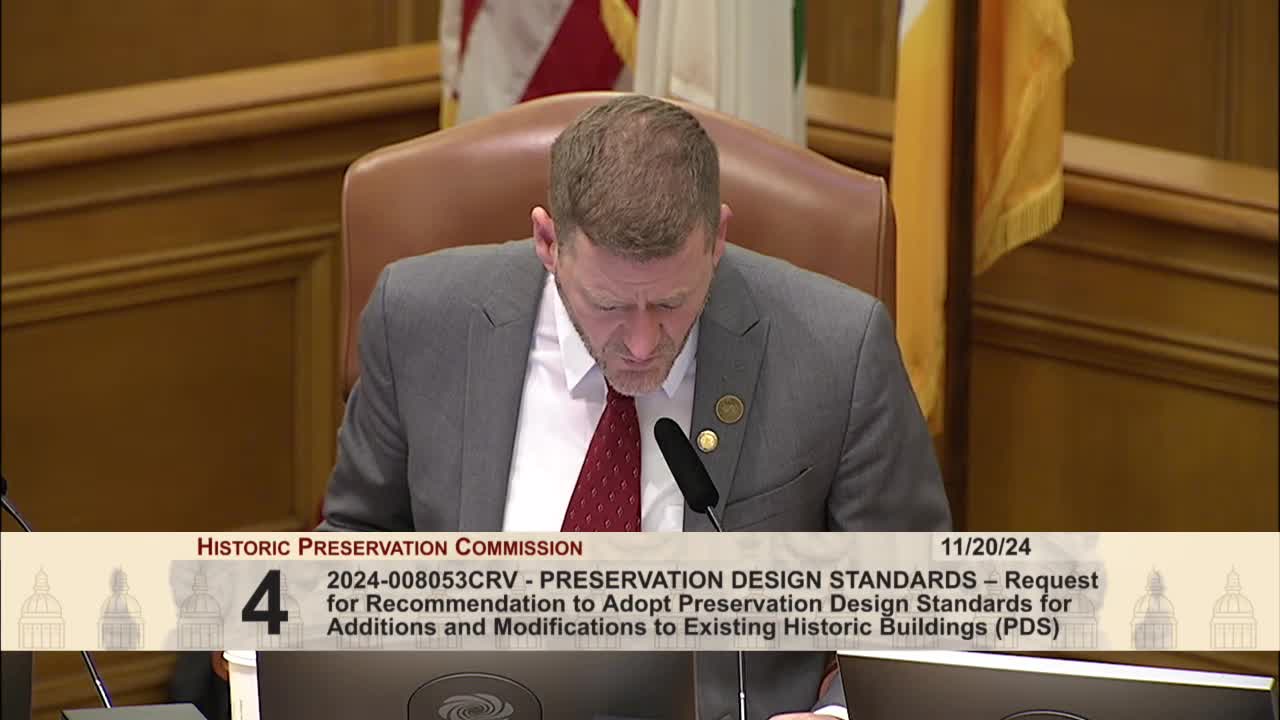San Francisco Historic Preservation Commission adopts new design standards unanimously
November 20, 2024 | San Francisco City, San Francisco County, California
This article was created by AI summarizing key points discussed. AI makes mistakes, so for full details and context, please refer to the video of the full meeting. Please report any errors so we can fix them. Report an error »

In a recent meeting of the San Francisco Historic Preservation Commission, significant discussions centered around the adoption of new design standards aimed at preserving the city's unique architectural heritage while ensuring compliance with updated regulations. The meeting highlighted the importance of balancing historical preservation with modern building codes, particularly in light of California's historical building code, which allows for flexibility in applying standards to qualified historic properties.
Commissioner Nungess Warren emphasized the need for staff to consider the implications of the proposed standards, suggesting that a mandatory approach for certain aspects could be beneficial, while allowing discretion in others. This reflects a growing recognition of the complexities involved in maintaining San Francisco's diverse architectural landscape.
Another key point raised was the request for regular updates on the implementation of these standards. Commissioner Wright proposed that the commission receive updates every six months to assess how the new guidelines are being applied and to address any emerging issues. This proactive approach aims to ensure that the standards remain effective and relevant as they are put into practice.
The commissioners expressed appreciation for the efforts of staff members in creating these standards, acknowledging the challenges of standardizing regulations in a city known for its individuality. The discussions also touched on the importance of fostering open communication with project developers, encouraging pre-review discussions to clarify expectations and provide specific examples of successful applications.
In addition to the technical aspects of the standards, there was a call to highlight the positive impacts of the proposed amendments. Commissioners noted the need to articulate the benefits of preserving San Francisco's cultural and aesthetic values, rather than solely focusing on potential drawbacks.
The meeting concluded with a unanimous vote to adopt the new design standards, signaling a commitment to preserving the city's historical character while adapting to contemporary needs. As the commission moves forward, the emphasis on regular reviews and community engagement will be crucial in navigating the challenges of historic preservation in an evolving urban environment.
Commissioner Nungess Warren emphasized the need for staff to consider the implications of the proposed standards, suggesting that a mandatory approach for certain aspects could be beneficial, while allowing discretion in others. This reflects a growing recognition of the complexities involved in maintaining San Francisco's diverse architectural landscape.
Another key point raised was the request for regular updates on the implementation of these standards. Commissioner Wright proposed that the commission receive updates every six months to assess how the new guidelines are being applied and to address any emerging issues. This proactive approach aims to ensure that the standards remain effective and relevant as they are put into practice.
The commissioners expressed appreciation for the efforts of staff members in creating these standards, acknowledging the challenges of standardizing regulations in a city known for its individuality. The discussions also touched on the importance of fostering open communication with project developers, encouraging pre-review discussions to clarify expectations and provide specific examples of successful applications.
In addition to the technical aspects of the standards, there was a call to highlight the positive impacts of the proposed amendments. Commissioners noted the need to articulate the benefits of preserving San Francisco's cultural and aesthetic values, rather than solely focusing on potential drawbacks.
The meeting concluded with a unanimous vote to adopt the new design standards, signaling a commitment to preserving the city's historical character while adapting to contemporary needs. As the commission moves forward, the emphasis on regular reviews and community engagement will be crucial in navigating the challenges of historic preservation in an evolving urban environment.
View full meeting
This article is based on a recent meeting—watch the full video and explore the complete transcript for deeper insights into the discussion.
View full meeting
